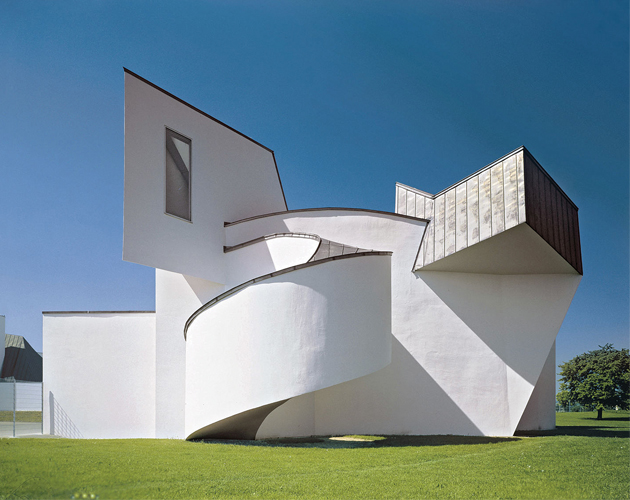The Vitra Design Museum. All photos courtesy of Vitra
The traditional office is a thing of the past at Vitra whose ‘New Office’, designed by Sevil Peach in 2000, sets out aspirations for a better working culture of the future.
Aiming to provide increased mobility at work, employees feel liberated to create their own personalised office environments, where “we live our own designs”, as noted by Chrissie Muhr, senior researcher at Vitra. It is this humane approach to design, which sets this family firm apart, as it continues to enhance our living and working spaces.
Formed in 1950, with a main headquarters in Birsfelden, Switzerland and the striking Vitra Campus in Weil am Rhein, Germany, Vitra works with a strong focus on technical and conceptual expertise. Its attention to detail is matched by its extensive historical archive of design classics, which harks back to the post-war boom of the 1950s, when “out with the old and in with the new” defined social attitudes of the time.
The Swiss firm’s journey initially began with a trip to the United States in 1953 when founders Willi and Erika Fehlbaum chanced on design couple Charles and Ray Eames. The Eameses designed innovative products including films, books, exhibitions and iconic furniture, making a notable historical contribution to the development of modern architecture and design. A meeting of like minds that led to a lasting friendship, this perfect coming together would eventually play a pivotal role in shaping Vitra’s ethos.
Vitra’s collections are playfully modern and innovation driven. Decorative objects, lighting and sofas are just some of the products on offer, but it is the firm’s work-focused range, in particular the Aluminium Group chairs, that subvert outdated office environments.
Conceived by Charles and Ray Eames in 1958 for the private residence of an art collector in Columbus, Indiana, USA, the chair the duo designed became iconic and had an equally timeless production blueprint, detailing unique welding techniques and a comprehensive manufacturing guide.
This was made possible after Vitra successfully negotiated the licensing rights to the designs by Eames and George Nelson for the European market.
While craftsmen at Vitra, who take one year to acquire the necessary skills, continue to scrupulously adhere to the seven basic steps - high-frequency welding, sewing, commissioning, screwing and rotating, corner turning,stabilising (bracing and armrests), base assembly and packaging - laid out by the Eameses, the methods were brought up to speed thanks to upgrades in technology. As a result, an Aluminium Chair comes to life in just 20 minutes. “For its construction, the designer couple departed from the principle of the seat shell. Instead, they stretched a panel of fabric or leather between two aluminium side pieces to create a taut but elastic seat,” comments Vitra.
Comprising various models, for use at home, in the office or in public areas such as libraries, the chair sits comfortably in many settings. Finishes come in a choice of aluminium bases with a polished, chrome-plated or black powder-coated finish as well as a variety of colours and textures, such as fabric, leather or upholstery.


